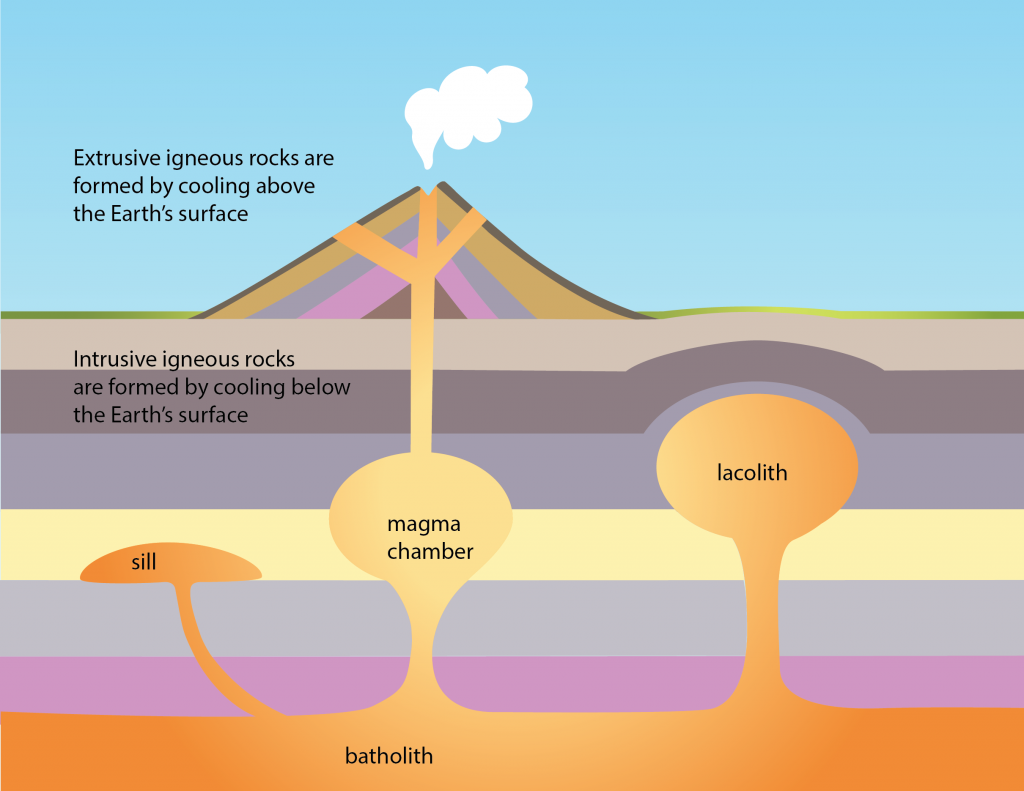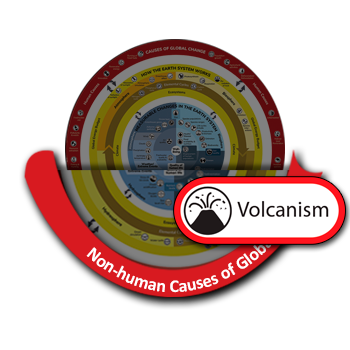Volcanism is the eruption of molten rock from inside the Earth to the surface.
Volcanism occurs because of Earth’s internal heat, and is associated with tectonic processes and a part of the rock cycle.

Volcanic eruptions occur when molten lava reaches the surface of the Earth. When lava cools at the surface it is called extrusive igneous rock.
Volcanism can both increase and decrease temperature. Volcanism can cause long term increases in average temperatures by releasing greenhouse gases, but at a very slow rate over millions of years. By comparison, human activities that release greenhouse gases have increased Earth’s average temperature just over the last few decades. Volcanic events can also cause short term cooling by increasing the amount of airborne particles that reflect sunlight in the atmosphere.
Although volcanic events have not caused the recent increase in Earth’s average temperature, eruptions have occurred throughout history and influence the Earth system in a variety of ways on various scales. Some of these ways include:
- Affecting the reflectivity of the atmosphere by releasing airborne particles, which can result in short-term cooling of the atmosphere.
- Airborne particles that affect air quality.
- Releasing greenhouse gases, including carbon dioxide and water vapor, although not enough to account for current warming trends.
- Affecting mountain building and formation of new land (distribution of continents and oceans).
- The displacement of human populations that live near volcanoes due to the release of lava, ash, and airborne particles.
Can you think of additional cause and effect relationships between volcanism and other parts of the Earth system?
Visit the rock cycle, Earth’s internal heat, and plate tectonics pages to learn more about volcanism and how this phenomenon is connected to other parts of the Earth system.
Investigate
Learn more in these real-world examples, and challenge yourself to construct a model that explains the Earth system relationships.
